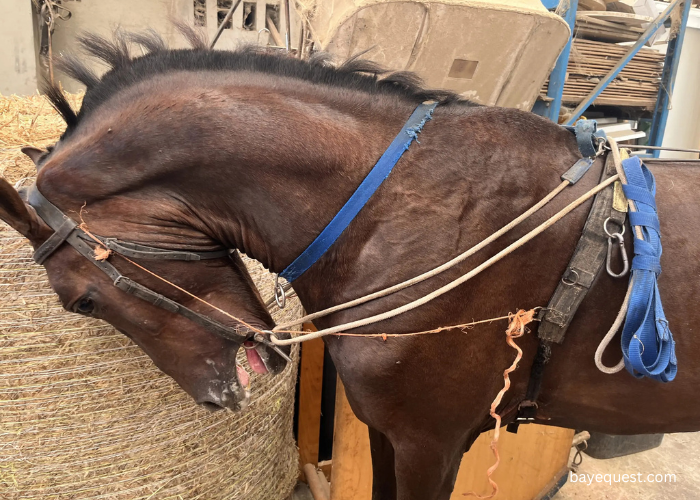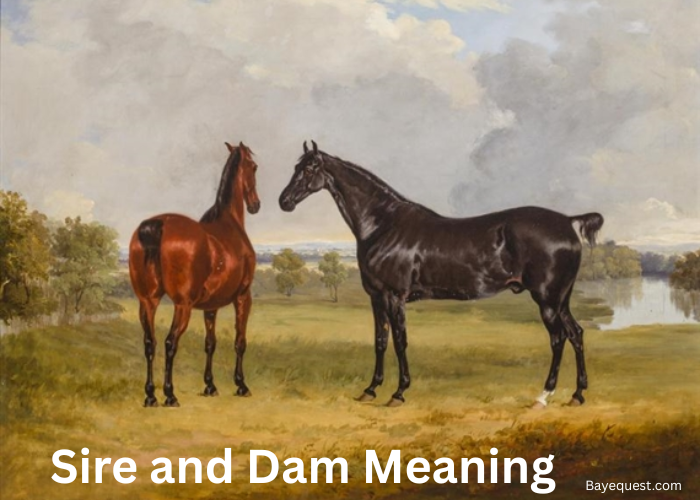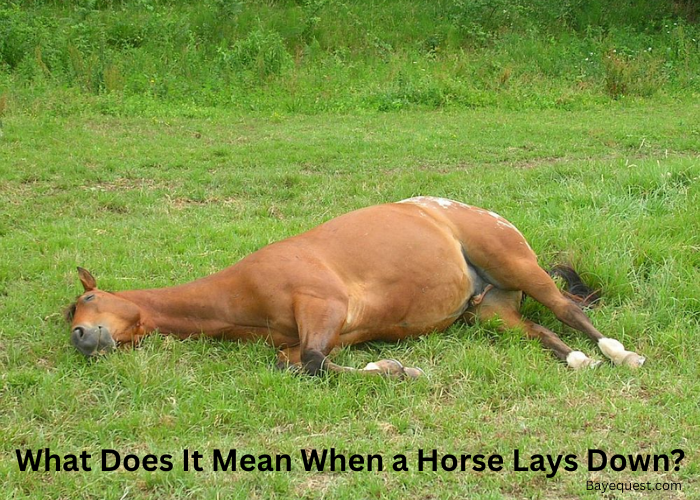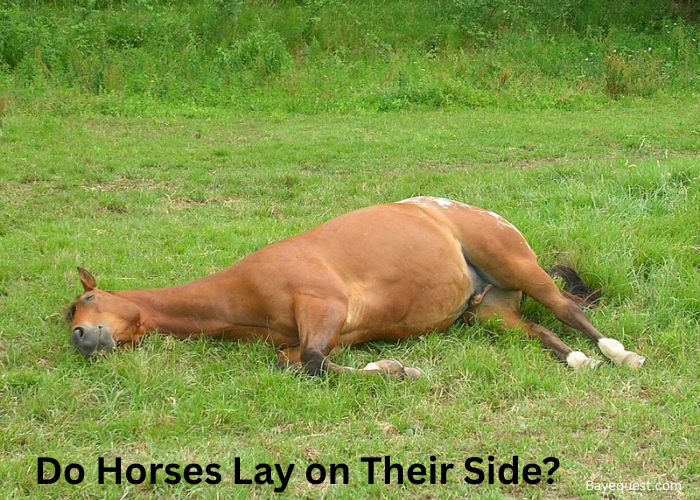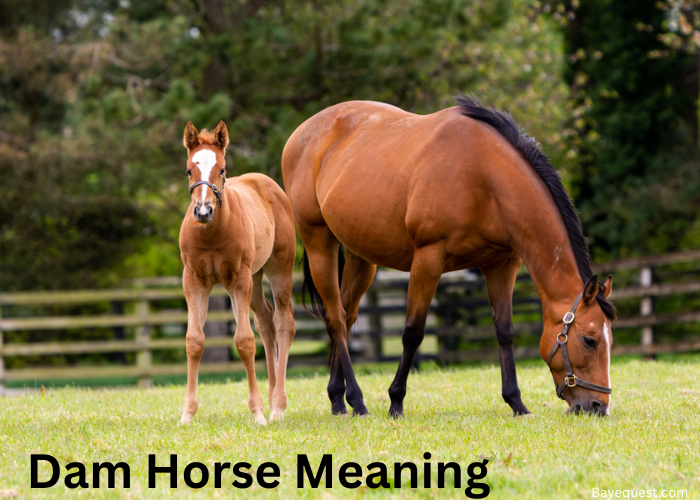Horse abuse is a heartbreaking reality. It happens more often than most people realize.
From racing tracks to farms, horses suffer in silence. They endure neglect, physical harm, and emotional stress. But we can make a difference.
By understanding the signs and knowing where to report abuse, we can help protect these incredible animals.
This blog will explore what horse abuse looks like, share real cases, and explain how you can take action.
Together, we can stand up for horses and ensure they live the lives they deserve.
What is Horse Abuse?
Horse abuse happens when a horse is mistreated, neglected, or harmed by its owner or caregiver.
It includes physical abuse, like hitting or overworking the horse, and emotional neglect, such as not providing proper care, food, or shelter.
Horses can suffer from poor living conditions, malnutrition, and even injuries that are left untreated.
Abuse also occurs when horses are pushed beyond their limits in sports or work without proper rest.
Whether intentional or due to ignorance, horse abuse leaves lasting damage, and need to stop.
How to Spot Horse Abuse
Spotting horse abuse requires careful observation of the horse’s physical condition and behavior. Here are some key signs to look out for:
1. Physical signs
- Visible wounds, cuts, or untreated injuries.
- Thin, malnourished appearance, with visible ribs or bones.
- Overgrown or neglected hooves, leading to discomfort or pain.
- Lameness or difficulty moving, suggesting untreated injuries or overwork.
2. Behavioral signs
- Extreme fear or aggression towards humans.
- Reluctance to be touched, saddled, or led.
- Unusual behavior, such as repetitive movements (cribbing, weaving), which often indicate stress or poor living conditions.
3. Living conditions
- Horses kept in small, dirty, or unsafe enclosures.
- Lack of access to clean water, food, or proper shelter.
- Overcrowded spaces with little room to move or lie down.
4. Signs of neglect
- Long periods without care or attention.
- Lack of veterinary care, leading to infections or untreated conditions.
- Obvious signs of dehydration, exhaustion, or illness.
Facts About Horse Abuse
Here are some key facts about horse abuse:
1. Common but underreported
Horse abuse is more frequent than many realize, but it often goes unreported due to lack of awareness or fear of retaliation from abusers.
2. Global issue
Horse abuse occurs worldwide, from racing industries to private farms.
Countries with significant equine industries, like the U.S., U.K., and Australia, have reported numerous cases of neglect and mistreatment.
3. Varied forms of abuse
Abuse can range from physical harm, to emotional neglect.
Horses may also suffer from malnutrition, untreated medical conditions, and improper housing.
4. Laws exist but vary
Many countries have laws protecting horses from abuse, such as the Animal Welfare Act in the U.S.
However, enforcement varies, and some regions have weaker regulations, leading to continued mistreatment.
5. Racing industry concerns
The horse racing industry is often criticized for pushing horses beyond their limits, leading to injuries or death.
In some cases, injured horses are euthanized because they are no longer profitable.
6. Public awareness is growing
Awareness of horse abuse has increased, thanks to advocacy groups and media coverage.
Campaigns from organizations like the ASPCA and Humane Society help educate the public and encourage reporting of abuse cases.
7. Rehabilitation is possible
Many horses rescued from abusive situations can recover with proper care, patience, and rehabilitation.
Organizations dedicated to horse rescue work tirelessly to help abused horses regain trust and health.
Notable Cases of Horse Abuse
Here are some notable cases of horse abuse that raised public awareness and led to significant actions:
1. Ferdinand – The Racehorse Tragedy
Ferdinand, a 1986 Kentucky Derby winner, was a celebrated racehorse.
After his retirement, Ferdinand was sold to a stud farm in Japan.
Years later, it was discovered that he had been slaughtered for meat when no longer profitable.
This case sparked outrage and led to stricter regulations and increased awareness about the fate of retired racehorses.
2. The Spindles Farm Rescue
In 2008, one of the worst cases of horse neglect in the U.K. occurred at Spindles Farm, where over 100 horses were found in horrific conditions.
Many were starved, living in filth, and suffering from untreated injuries.
This case led to the conviction of the farm’s owner, highlighted the need for tougher animal welfare laws.
3. Mare’s Death in a Show Jumping Scandal
In 2011, a top show jumper, Kevin Thornton, was accused of abusing his horse during training.
The horse collapsed and died after being overworked.
Thornton faced legal action, and the case brought international attention to the treatment of show horses.
4. American Pharoah Abuse Allegations
After American Pharoah won the Triple Crown in 2015, allegations surfaced about his training practices.
It was reported that he was subjected to excessive whipping during races.
While the case was controversial, it led to more scrutiny of how racehorses are treated.
5. Carriage Horses in New York City
New York City’s horse-drawn carriage industry has faced ongoing criticism and legal battles due to accusations of horse abuse.
Horses have been found working in extreme weather conditions, suffering from exhaustion and lack of proper care.
Where to Report Equine Abuse in America
If you suspect or witness horse abuse in America, it’s important to take action by reporting it to the right authorities.
Here’s a guide on where to report equine abuse:
1. The Humane Society of the United States (HSUS)
HSUS has a dedicated animal cruelty reporting system. You can file a report online or contact them for guidance on what steps to take if you encounter horse abuse.
Website: www.humanesociety.org
2. ASPCA (American Society for the Prevention of Cruelty to Animals)
The ASPCA responds to reports of animal cruelty, including horse abuse. They have resources and hotlines to help guide you through the reporting process.
Phone: (800) 628-0028
Website: www.aspca.org
3. Local Animal Control or Law Enforcement
Many cases of horse abuse are handled at the local level by animal control officers or the police.
Contact your local animal control department or sheriff’s office to report suspected abuse.
4. The American Horse Council’s Equine Welfare Data Collective
The Equine Welfare Data Collective gathers reports of horse abuse and works with welfare organizations to track and respond to abuse cases.
Website: www.equinewelfaredata.org
5. State Animal Welfare Agencies
Each state has its animal welfare laws and agencies that handle abuse cases.
You can report suspected horse abuse to these agencies, which may include state agriculture departments or specific animal cruelty prevention units.
6. Local Equine Rescue Organizations
There are numerous local and regional horse rescue organizations across the U.S. that can offer assistance or direct you to the right authorities to report abuse.
These groups often work closely with law enforcement to protect horses.
7. National Equine Welfare Organizations
Organizations like the American Association of Equine Practitioners (AAEP) and Equine Rescue Network (ERN) can offer guidance on reporting abuse and can sometimes connect you with local resources.
8. Anonymous Reporting Services
Some areas offer anonymous animal abuse hotlines. Check your local community resources for confidential ways to report abuse without revealing your identity.
Tips for Reporting Animal Cruelty
Here are some helpful tips for reporting animal cruelty, including horse abuse:
1. Stay calm and gather information
When you spot animal cruelty, remain calm and assess the situation.
Take note of the location, the condition of the animal, and the type of abuse or neglect you’re witnessing.
Collect specific details like the horse’s appearance, injuries, or signs of malnutrition, and note any identifying features of the person responsible for the abuse.
2. Document the abuse
If it’s safe and possible, take photos or videos of the abused animal and their living conditions.
Visual evidence can be crucial when reporting the case to authorities.
Write down dates, times, and specific observations. This documentation can help build a stronger case.
3. Avoid confronting the abuser
Do not approach or confront the person involved in the abuse.
This could escalate the situation and put you and the horse in danger. Let the authorities handle the confrontation.
4. Contact the proper authorities
Report the abuse to local animal control, law enforcement, or an animal welfare organization (like the Humane Society or ASPCA).
Provide all the details you’ve gathered, including any photos or videos, when making your report.
5. Follow up on your report
After reporting, follow up with the organization or authority you contacted to check the status of the investigation.
While they may not provide specific updates due to privacy laws, it shows you’re serious about ensuring the issue is addressed.
6. Stay anonymous if necessary
If you’re worried about retaliation, many organizations allow anonymous reporting.
You don’t have to reveal your identity, but your report can still trigger an investigation.
7. Don’t wait – time is critical
If you suspect horse abuse, report it immediately.
The sooner authorities are alerted, the sooner the horse can receive help and be removed from harm.
8. Offer to help, but let professionals lead
While it’s natural to want to help, remember that professionals are trained to handle abuse cases.
Offer your support by providing information, but allow rescue organizations or animal control to take the lead in investigating and intervening.
9. Report recurring cases
If you notice a pattern of ongoing abuse or neglect, continue reporting each incident.
Persistent calls can motivate authorities to take action sooner.
10. Educate others
Share information about how to recognize and report horse abuse.
The more people know, the more likely it is that abused animals will be rescued and protected.
Legal Actions and Consequences for Abusers
Legal actions against horse abusers can lead to serious consequences, depending on the severity of the case and local laws.
Here’s what happens when someone is found guilty of horse abuse:
Investigation and prosecution
After a report is made, authorities investigate the abuse. If evidence is found, charges are filed under state or federal animal cruelty laws.
Investigations often involve visiting the site, collecting evidence, and interviewing witnesses.
Common penalties
Horse abusers can face:
Fines. Offenders may be fined from a few hundred to thousands of dollars, depending on the case’s severity and repeat offenses.
Imprisonment. In serious cases, like death or severe injury of a horse, offenders can face months or years in jail.
Community service and probation. Abusers might be sentenced to community service related to animal welfare and could be placed on probation.
Loss of ownership. Abusers may lose their right to own the horse and, in some cases, be banned from owning animals in the future.
Civil lawsuits and animal abuser registries
In addition to criminal penalties, abusers may face civil lawsuits for damages.
Some states have animal abuser registries to prevent convicted individuals from adopting or purchasing animals.
Public consequences
Public awareness of an abuse conviction can lead to social backlash, damaging the offender’s reputation or career.
While laws are in place, enforcement often depends on public reporting and advocacy.
Legal actions play a key role in deterring abuse and promoting better care for horses.
How to Get Involved in Horse Welfare
Getting involved in horse welfare is a great way to make a difference.
You can volunteer at equine rescue organizations, helping with care, feeding, and rehabilitation.
Donating to horse charities is another impactful way to contribute, as your support helps provide essentials like food and medical care.
If you suspect horse abuse, report it to local authorities or animal welfare groups. Speaking up can save a horse from suffering.
You can also educate others by sharing information on how to spot and report abuse, raising awareness in your community.
If you are able, adopt or foster a horse in need.
Supporting ethical treatment in equestrian sports and working environments is another way to promote welfare.
Lastly, advocate for stronger animal welfare laws to protect horses from abuse and neglect.
Each of these actions helps improve the lives of horses in meaningful ways.
Horse Abuse: Conclusion
Horse abuse is a heartbreaking reality, but we can all make a difference.
By knowing the signs, reporting abuse, and supporting rescue efforts, we help protect these incredible animals.
Every report could save a horse from suffering and give them the care they deserve.
Whether it’s speaking up, donating to rescue organizations, or spreading awareness, your actions matter.
Horses rely on us to stand up for them. Together, we can put an end to their pain and ensure they live safe, healthy lives.
Let’s be their voice and fight for their future.




